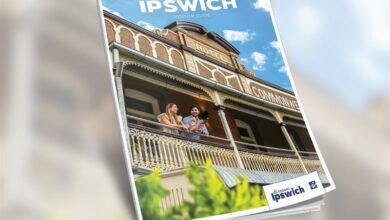Ipswich City Council is set to be represented by a mayor and eight councillors after the March 2020 local government elections.
Queensland’s Local Government Change Commission has determined Ipswich should be divided into four multi-member divisions with two councillors representing each division.
Ipswich was previously a divided council with one councillor representing each of 10 divisions, plus a separately elected mayor.
Local Government Minister Stirling Hinchliffe appointed Interim Administrator Greg Chemello in August 2018 and ordered a review of the internal boundaries (divisions) of council by the Change Commission.
“The purpose of this review is to ensure each division of the council has a similar number of voters (quota), so that each person’s vote has the same value,” according to the commission, an independent body that assesses whether proposed changes to Queensland’s local councils are in the public interest.
The commission yesterday announced it had completed its initial assessment of the Ipswich City Council electoral arrangement and divisional boundary review and released its proposed determination report.
The report can be viewed at the Electoral Commission of Queensland’s website: https://ecq.qld.gov.au/lgr/ipswich
A notice inviting comments on the proposed boundaries has been released to the media and on the Electoral Commission of Queensland’s social media platforms.
Emails will also be sent to about 50,000 enrolled Ipswich electors with email addresses on the roll.
Comments on the proposal are invited until 30 July 2019.
“The Minister referred the City of Ipswich Divisional Boundary Review Report, commissioned by the council’s Interim Administrator, and requested the Change Commission review the recommended option from the Report,” Electoral Commissioner Pat Vidgen and Casual Commissioner Wade Lewis said.
“The change proposed was for the council to have four multi-member divisions, instead of the current 10 single-member divisional arrangement. A single-member division has one councillor representing it, whereas a multi-member division can have more than one councillor per division.”
The Change Commission determined that while both single-member and multi-member divisions will provide the community-specific representation that is important to Ipswich residents, multi-member divisions are more likely to meet the criteria required.
“On the strength of the evidence presented in the report, including the results from extensive public consultation, multi-member divisions were found to be the preferred option. While there was clearly support shown for both single-member and undivided electoral arrangements, there was also strong opposition to both systems.”
Multi-member divisions were found to be supported by a greater number of people:
- Nearly 90 per cent of respondents ranked multi-member divisions as either their first or second preference.
- Seventy-five per cent of respondents who preferred undivided arrangements, voted multi-member divisions second.
- Nearly 90 per cent of respondents who preferred single-member divisions, voted multi-member divisions second.
The commission deliberated on whether four or five multi-member divisions would be in the public interest for the Ipswich local government area.
It was decided that four divisions, with two councillors each, would cater for the current council size, while providing scope to add additional councillor/s to all or some of the divisions as communities expand and elector numbers increase – but probably not until after the March 2024 elections.
The commission said the proposals sought to address one of the key community concerns identified by council in the report that rural communities did not believe they had the representation required.
Divisions 1 and 4 amalgamate both rural and urban suburbs, while 2 includes suburbs towards the eastern end of council, and 3 many of the central Ipswich suburbs.
“The Change Commission has made a concerted effort to unite suburbs and their communities of interest within individual divisions.”
The proposed divisions
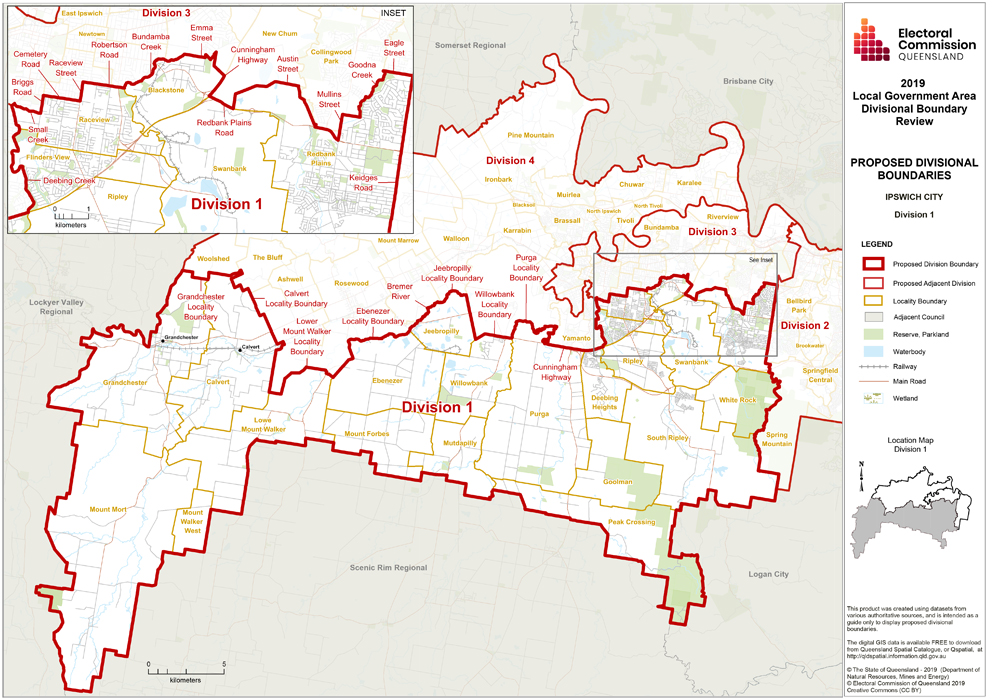
Division 1 is oriented in a west-east direction and includes the following suburbs: Grandchester, Mount Mort, Mount Walker West, Lower Mount Walker, Calvert, Ebenezer, Mount Forbes, Jeebropilly, Willowbank, Mutdapilly, Purga, Peak Crossing, Goolman, Deebing Heights, Raceview, Flinders View, Ripley, South Ripley, White Rock, Swanbank, Blackstone, and Redbank Plains.
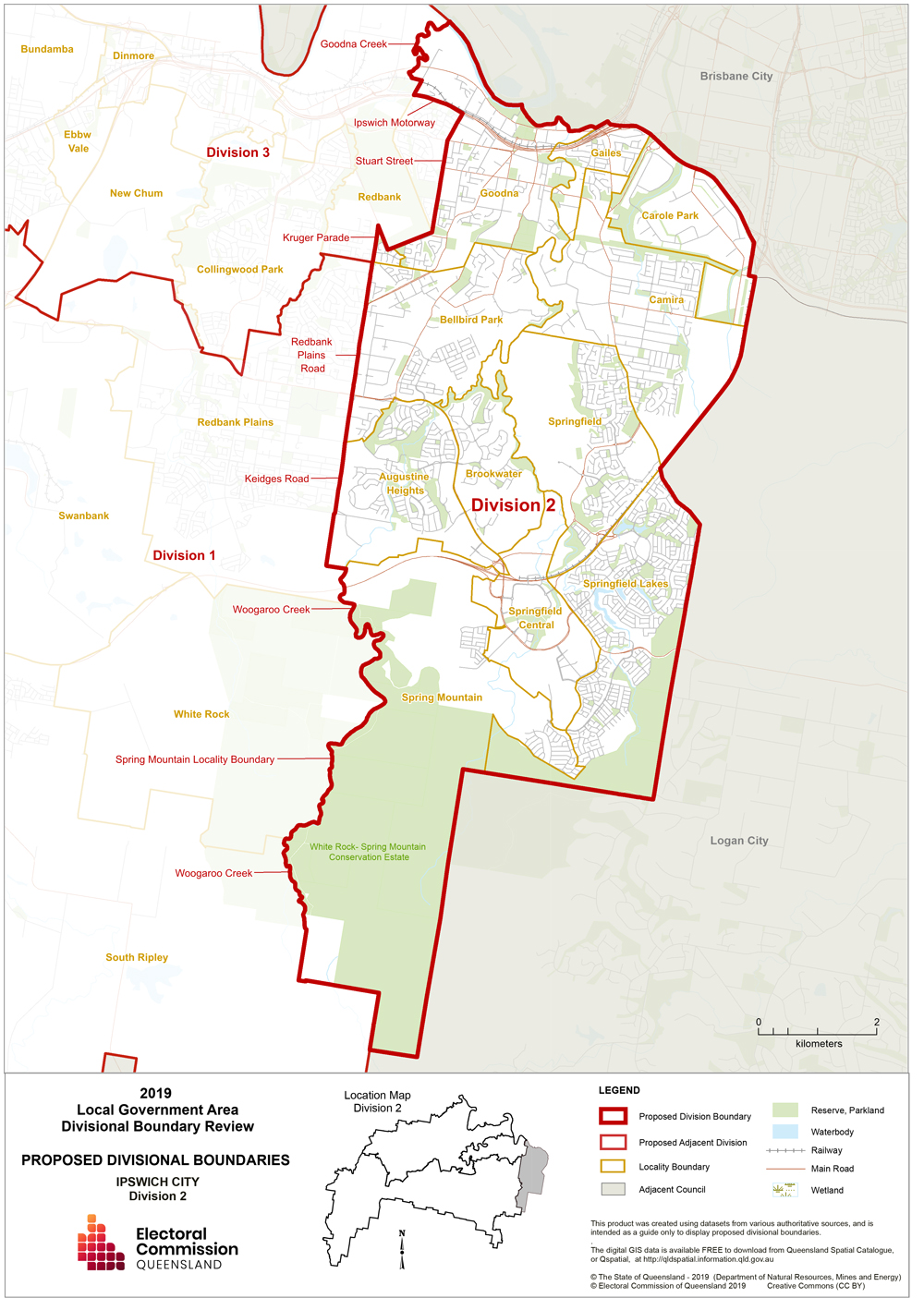
Division 2 is oriented in a north-south direction and includes the following suburbs: Spring Mountain, Springfield Lakes, Springfield Central, Springfield, Brookwater, Augustine Heights, Bellbird Park, Camira, Carole Park, Gailes and some of Goodna and Redbank.
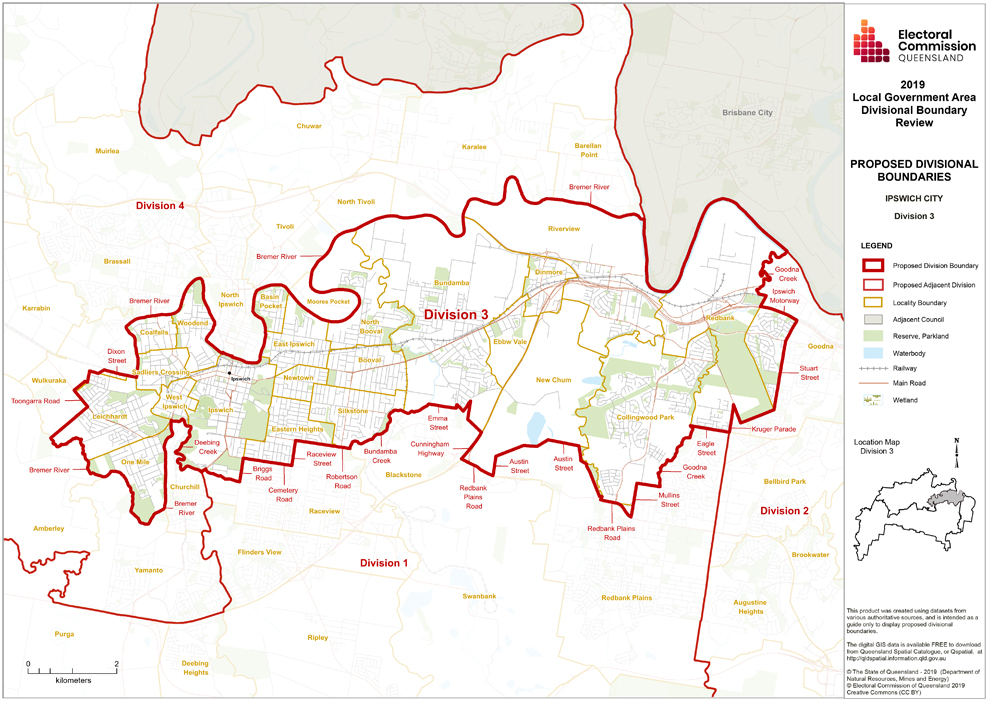
Division 3 is oriented in a west-east direction and includes the following suburbs: One Mile, Leichhardt, Coalfalls, Sadliers Crossing, West Ipswich, Woodend, Ipswich, Basin Pocket, East Ipswich, Newtown, Eastern Heights, Silkstone, Booval, North Booval, Bundamba, Ebbw Vale, New Chum, Dinmore, Riverview and Collingwood Park. It also includes a part of Wulkuraka that lies south of the railway line, most of Redbank excluding those houses situated east of Krugar Parade and includes part of Goodna that falls west of Stuart Street.
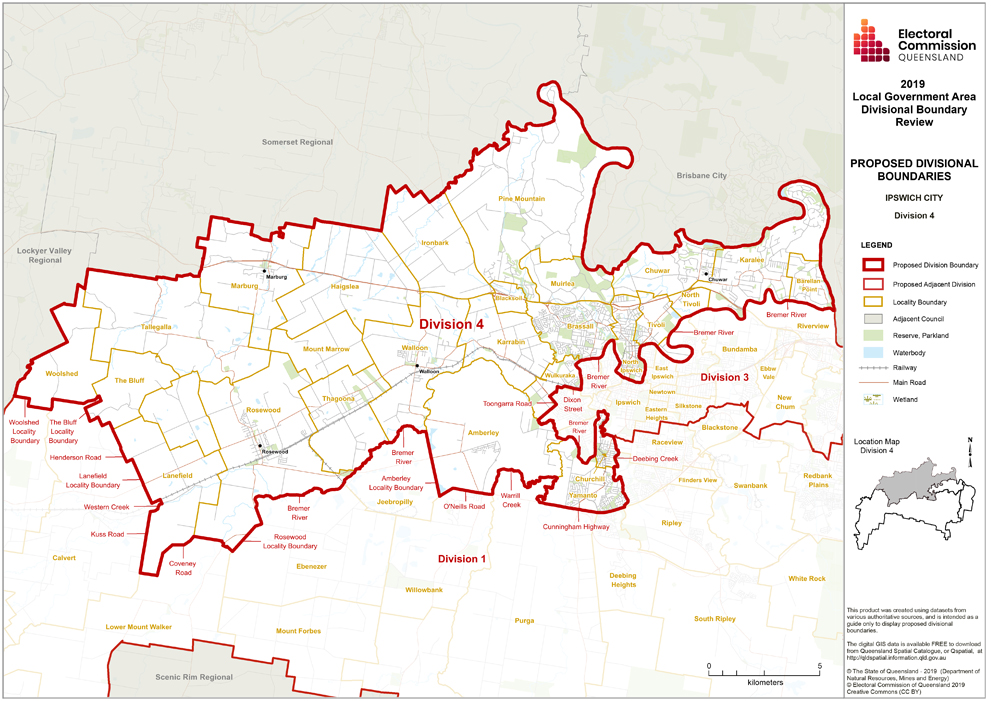
Division 4 is oriented in a west-east direction and includes the following suburbs: Woolshed, The Bluff, Ashwell, Lanefield, Rosewood, Tallegalla, Marburg, Mount Marrow, Thagoona, Walloon, Haigslea, Ironbark, Pine Mountain, Blacksoil, Karrabin, Amberley, Yamanto, Churchill, Brassall, Muirlea, North Ipswich, Tivoli, Moores Pocket, North Tivoli, Chuwar, Karalee, Barellan Point and most of Wulkuraka that lies north of the railway line.


